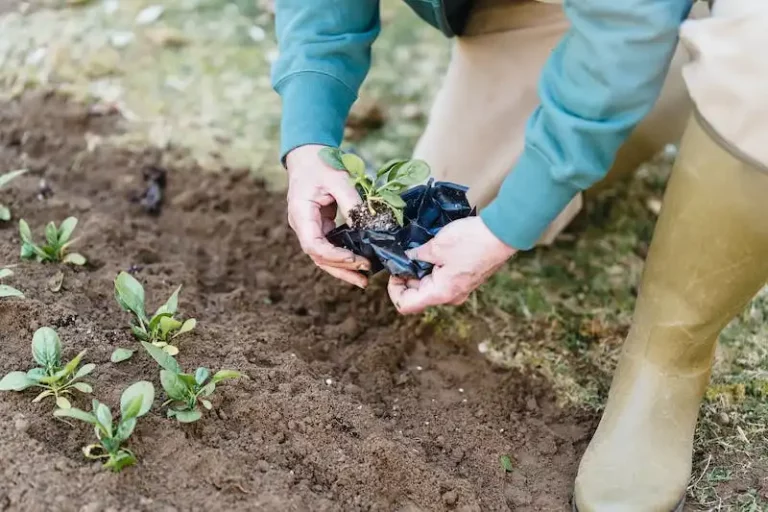Have you ever wondered how those beautiful fruit trees are trained to grow against a wall or fence in a stunning pattern? This classic horticultural technique is known as espalier, and it can be a great way to maximize your garden space and create a focal point of greenery. In this article, we will provide step-by-step instructions on how to espalier a fruit tree, so you can enjoy the beauty and bountiful harvest of your own espaliered tree.
The first step in creating an espaliered fruit tree is choosing the right tree and location. It is important to select a tree that will grow well in your climate and soil conditions. Popular choices for espalier training include apple, pear, and fig trees. Once you have chosen your tree, find a suitable location against a wall or fence where it can be trained.
Next, you will need to prepare your tree and the chosen location for espalier training. Start by pruning your tree to remove any dead or stray branches. If your tree has been previously pruned, it may already have suitable branches for training. If not, you can encourage new growth by pruning your tree in a way that will create the desired pattern. For example, if you want a horizontal espalier, prune the tree to a single trunk and a few selected branches that are evenly spaced horizontally.
Once your tree is pruned, it is time to build a support structure for your espaliered tree. For a simple example, you can attach three sturdy trellises to your wall or fence at different heights: one at about waist level, one at shoulder level, and one at eye level. These trellises will serve as the framework for your espaliered tree.
Now, it’s time to start training your tree along the trellises. Carefully attach your tree to the first-tier trellis using garden twine or wire. As your tree grows, you will need to repeat this process, attaching each new branch to the trellis at the appropriate level. The branches can be gently bent and tied to the trellis to create the desired pattern. Regular pruning will help maintain the shape and encourage new growth.
As your espaliered fruit tree grows, be sure to provide it with proper care. Water regularly, especially during dry spells, and fertilize with compost or a suitable fruit tree fertilizer. Remove any suckers or unwanted growth that may appear. Prune back any branches that grow too long or in the wrong direction. With proper care and attention, your espaliered fruit tree will thrive and produce a bountiful harvest.
In conclusion, espalier is a beautiful and intricate technique for training fruit trees to grow along a wall or fence. By following these step-by-step instructions, you can create your own espaliered fruit tree and enjoy the beauty and bounty of this classic horticultural practice.
Espalier
Espalier is a fruit tree training technique that involves growing the tree in a flat, two-dimensional form against a support structure such as a wall or fence. It is a popular method used in gardening to create a beautiful and space-saving display of fruit trees.
What makes espalier unique is its flexibility. Depending on the desired pattern and the available space, trees can be trained in a variety of shapes, including horizontal tiers, diagonal patterns, or even intricate designs. This allows the gardener to create custom espalier designs to suit their specific needs and preferences.
The process of espalier training typically begins with the planting of a young fruit tree. Once the tree has been planted, the initial training begins by selecting the desired branches and carefully bending them in the desired direction. These branches are then secured to a support structure using flexible ties or wires.
As the tree grows, branches can be guided upward, downward, or horizontally to create the desired shape. Regular pruning is essential to control the size and shape of the tree, as well as to encourage branching and fruit production. Pruning should be done during the dormant season to avoid interfering with the tree’s growth cycle.
There are several different espalier techniques that can be used, including the popular cordon method which involves training the tree to grow along one horizontal line. Other techniques include the fan method, which creates a fan-shaped pattern, and the Belgian fence method, which involves training multiple parallel branches in a crisscross pattern.
It is important to choose the right fruit tree varieties for espalier training. Some varieties, such as apples and pears, are naturally more suitable for espalier due to their flexible branches and ability to produce fruit along the main stem. Other varieties may require more intensive pruning and training to achieve the desired shape.
When selecting a location for espalier training, it is important to consider factors such as sunlight, soil conditions, and available space. Espalier trees require at least six to eight hours of direct sunlight daily to thrive and produce fruit. The soil should be well-draining, rich in organic matter, and properly amended with compost or other nutrients.
As the tree grows, it is important to regularly monitor and adjust the training to ensure that the branches are correctly positioned. This may involve gently bending or tying branches to the support structure. The goal is to create an open framework that allows for good air circulation and sunlight penetration, which helps to prevent disease and promote fruit ripening.
In conclusion, espalier is a simple yet effective technique for training fruit trees into a two-dimensional form against a support structure. It offers a creative way to grow fruit trees in smaller spaces and adds an interesting visual element to gardens, especially when the trees are in bloom. With proper care and training, espalier trees can produce abundant fruits and become a focal point in any garden or arboretum.
Ask Your Gardening Question
- How do I train fruit trees to grow horizontally?
- What are the best varieties of fruit trees for espalier?
- Where should I plant my espalier fruit trees?
- Can I espalier other plants, like vines or shrubs?
- Is espalier a labor-intensive gardening technique?
- Are there any specific supports I should use for espalier?
- How do I shape and prune an espalier tree?
- Can I espalier fruit trees in small outdoor spaces?
- When is the best time to plant and train espalier trees?
- What are the steps to create an espalier fruit tree?
- Do espalier fruit trees yield better fruit than non-espaliered trees?
- Can I espalier fruit trees on fences or walls?
- Are there any specific varieties of fruit trees that are commonly used for espalier?
- What are the benefits of growing espalier fruit trees?
- How long does it generally take for an espalier tree to develop?
- Can I remove an espalier tree and plant something else in its place?
How To Espalier Instructions For Fruit Tree Training
Training fruit trees into patterns against a wall or fence can create an exquisite and intricate display in your garden. Espalier is the practice of training branches to grow in a specific shape, which not only enhances the beauty of the plant, but also maximizes fruit yields in limited spaces.
Here are the steps on how to espalier fruit trees:
- Select a suitable plant: Choose a fruit tree or shrub that is suitable for espalier training. Apple, pear, and peach trees are commonly used, but you can also experiment with other fruit-bearing plants.
- Plan your design: Determine the desired pattern or shape you want your fruit tree to develop into. Popular patterns include cordon, fan, and candelabra. This will help you decide where to attach the branches.
- Prepare the plant: Before planting the tree, remove any branches that are damaged, dead, or crossing over each other. This will ensure that the plant grows healthily and in the desired shape.
- Plant the tree: Dig a hole large enough to accommodate the root ball of the tree. Place the tree in the hole and backfill with soil, making sure to water it well.
- Install supports: Determine the locations where you will attach the branches and install posts or a trellis system accordingly. This will provide the necessary support for the growing tree.
- Train the branches: Once the tree starts growing, carefully train the branches along the supports. Use ties or clips to secure the branches in place and gently bend them to follow the desired pattern.
- Prune regularly: To maintain the desired shape and maximize fruit yields, it is important to prune the tree regularly. Remove any branches that are growing in the wrong direction or intruding into the designated shape.
- Water and fertilize: Like any other fruit tree, espaliered trees require regular watering and fertilizing. Make sure to water the tree deeply and provide it with nutrients to promote healthy growth.
Espalier training is a labor-intensive gardening technique, but the results are highly rewarding. The Netherlands and the Arboretum in Wisconsin are famous for their espaliered fruit trees, showcasing the beauty and wisdom of this gardening practice. So, if you have a large wall or fence in your garden, why not try espaliering a fruit tree and enjoy the beauty and abundant fruit it yields!
Fruit Tree Training
Fruit tree training is an important technique in gardening that allows you to shape and control the growth of fruit trees. By training your fruit trees, you can achieve optimal yields and maintain a compact size that is easier to manage.
One popular method of fruit tree training is espaliering. Espaliered trees are trained to grow against a wall or fence, creating a flat, decorative pattern. This technique not only saves space, but it also allows for greater exposure to sunlight, which is essential for fruit development.
When espaliering a fruit tree, it is important to choose a suitable spot with good soil and plenty of sunlight. The tree should be planted close to the wall or fence where it will be trained. As the tree grows, specific branches are selected and attached to a trellis or wire using soft plant ties or plant bands.
It is best to start training your fruit tree when it is young, as it is easier to shape and manipulate it at this stage. The branches are then pruned and shaped each year to encourage horizontal growth. This helps to create a well-branched tree with a better fruit yield.
There are various espaliering techniques, including the cordon, fan, and lattice. Each technique requires specific pruning and training methods, so it is important to follow a guide or seek advice from gardening resources such as the Old Farmer’s Almanac or your local arboretum.
Fruit trees that are espaliered not only produce fruits, but they also make a beautiful addition to your garden. The vibrant colors of the fruit and the unique shape of the tree are particularly appealing. Some popular fruit tree varieties for espaliering include apple, pear, peach, and cherry.
While espaliered fruit trees require regular pruning and training, they also require proper care and maintenance. This includes regular watering, particularly during dry periods. It is best to water deeply and less frequently to encourage deep root growth.
In addition to wall or fence training, fruit trees can also be trained to grow against trellises or other structures. Some gardeners even create their own unique shapes by training the tree in a specific direction or using espalier techniques on multiple trees to create a living fence.
Overall, fruit tree training is a labor-intensive but rewarding process. With proper care and attention, your fruit tree will not only produce delicious fruits, but it will also become a beautiful feature in your garden.


